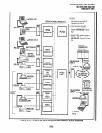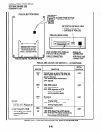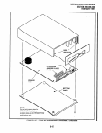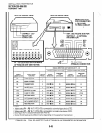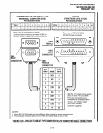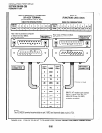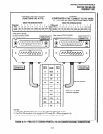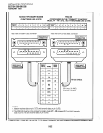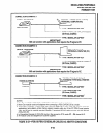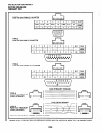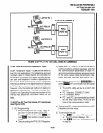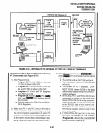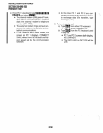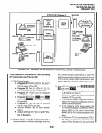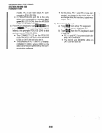
INSTALLATION-PERIPHERALS
SECTION 200-096-208
FEBRUARY1991
CONNECTION EXAMPLE 1
DIGITAL TELEPHONE
.
TOSHIBA LAPTOP OR IBM AT TYPE
PERSONAL COMPUTER (PC)
PDIU-DI BASE
TYPE 1 MODULAR ADAPTER’
TYPE B MODULAR CORD (CROSSED)
(50 ft max, 24AWG)
TYPE 2 MODULAR ADAPTER’
IMPORTANT!
Will not function with applications that require the RI signal to PC.
CONNECTION EXAMPLE 2
DIGITAL TELEPHONE
IBM PC OR XT TYPE
PERSONAL COMPUTER (PC)
PDIU-DI BASE
MODULAR ADAPTER’
TYPE A MODULAR CORD (STRAIGHT)
(50 ft max, 24AWG)
TYPE 2 MODULAR ADAPTER’
IMPORTANT!
Will not function with applications that require the RI signal to PC.
CONNECTION EXAMPLE 3
TOHSIBA P321 SL OF SIMILAR
STAND-ALONE DIU
I
PDIU-DS
TANDARD TYPE SERIAL PRINTER
TYPE 2 MODULAR ADAPTER’
TYPE A MODULAR CORD’
(50 ft max, 24AWG)
TYPE 2 MODULAR ADAPTER’
NOTES:
1. See Figure 8-34 for detailedpin out information of modular cords and adapters.
2. Never use modular cords and adapters when connecting a PDIU-DI/PDIU-DS to a modem.
3. Connection examples 1 and 2 work when using the PDIU-DI to make calls with personal computer
applications (auto-dialers, printer sharing, outgoing modem calls, etc). If the PC PDIU-DI must receive
calls, the RI lead is normally required; therefore, a standard RS-232 cable must be used (see Figures
8-29 and 8-30).
4. In Connection Example 3, PDIU-DS must be in the connect to DTE mode
(Pl
B
P9,
strapped A-B).
5. All modular cords and adapters are customer-supplied.
I
FlGURE8-33-PDIU-DI/PDIU-DS MODULAR CABLE/RJ-45ADAPTER CONNECTIONS
8-53



